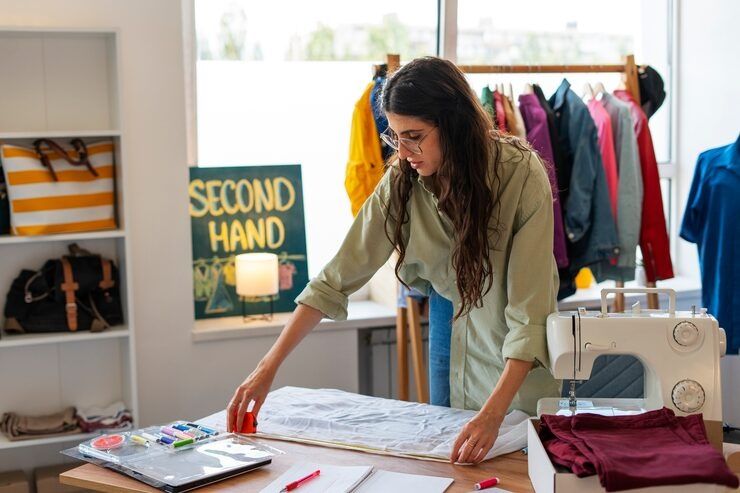Italy’s Fashion Schools Explained: Courses, Costs, and How to Apply
Italy has long been at the heart of global fashion. Known for luxury brands such as Gucci, Prada, and Valentino, it is also home to some of the world’s most prestigious fashion schools. These institutions attract aspiring designers, stylists, and fashion marketers from around the world.
Studying fashion in Italy means learning not only from textbooks but from cultural heritage, design innovation, and industry connections. Cities like Milan, Florence, and Rome serve as creative hubs where education and fashion industries meet. For international and local students, Italian fashion schools offer a gateway into both European and global markets.

Importance: Who Benefits and Why It Matters
Studying at a fashion school in Italy can offer significant advantages:
-
Career Opportunities: Graduates often go on to work for luxury fashion houses or start their own labels.
-
Industry Access: Proximity to events like Milan Fashion Week gives students real-world exposure.
-
Cultural Immersion: Living in Italy allows students to draw direct inspiration from art, architecture, and street fashion.
This path is relevant for:
-
Students looking for internationally recognized design education
-
Professionals seeking specialization in luxury fashion or sustainable fashion
-
Career switchers interested in fashion marketing, styling, or product management
Fashion education also plays a broader role in promoting sustainable design, circular economies, and innovation in textile technologies—making it increasingly relevant in today's changing fashion landscape.
Recent Updates in Italian Fashion Education (2024–2025)
Fashion education in Italy continues to evolve, with new trends and changes in course structures. Here are key updates:
-
Sustainability Focus: Many schools, including Polimoda and Istituto Marangoni, added sustainability and eco-design modules in 2024.
-
Online + On-Campus Learning: Hybrid programs became common post-pandemic, offering flexibility to international students.
-
Increased Scholarships: In 2025, Domus Academy and NABA launched merit-based scholarships targeting non-EU applicants.
-
AI and Digital Fashion: New courses in 3D fashion design, virtual prototyping, and AI in trend forecasting are gaining popularity.
-
Fashion Week Integration: Milan-based schools now offer direct involvement in fashion week projects as part of final-year experiences.
These updates reflect the ongoing integration of technology and sustainability in fashion education.
Laws and Policies Affecting Fashion Education in Italy
Understanding how education regulations impact foreign and domestic students is important:
Visa Requirements
-
Non-EU Students: Must apply for a study visa through the Italian consulate. Proof of admission, accommodation, and financial means is required.
-
EU/EEA Students: Do not need a visa but must register residency with local authorities upon arrival.
Language Policies
-
Many institutions offer English-taught programs, especially at master’s level. However, proficiency in Italian is recommended for internships and local industry networking.
Accreditation
-
Institutions like Politecnico di Milano and IUAD (Naples) are recognized by the Italian Ministry of Education (MIUR).
-
Private schools may not offer a state-accredited degree but often provide internationally accepted diplomas or certificates.
Tuition and Financial Aid Regulation
-
Public universities often charge lower tuition than private institutions.
-
International students from certain countries may access regional financial aid schemes or apply for scholarships through Italia.gov.it portals.
Tools and Resources for Fashion Students in Italy
Whether you're applying, budgeting, or seeking internships, these resources can help:
School Directories and Application Platforms
-
Fashion Schools.org (Italy Section) – Compare schools by program type and tuition
-
Study in Italy (studyinitaly.esteri.it) – Government portal for international education in Italy
-
CIMEA (cimea.it) – Academic recognition and degree comparison tools
Financial Planning
| Tool | Purpose |
|---|---|
| Tuition Fee Calculators (available on most school websites) | Estimate annual cost |
| Scholarshipportal.eu | Search scholarships for Italian programs |
| Euraxess Italy | Scholarships and fellowships, including for fashion-related research |
Internships and Networking
-
FashionUnited – Job board and internship listing for the European fashion industry
-
LinkedIn & Behance – Essential for building a professional online portfolio
-
Piattaforma AFAM – Access to state-recognized art and design academies
FAQs
What are the best fashion schools in Italy?
Top institutions include Polimoda (Florence), Istituto Marangoni (Milan, Florence), Domus Academy (Milan), NABA (Milan and Rome), and Accademia Costume & Moda (Rome). Public universities like Politecnico di Milano also offer strong fashion design programs.
How much does it cost to study fashion in Italy?
Tuition varies:
-
Public Universities: €1,000–€3,500/year
-
Private Institutions: €12,000–€25,000/year
Living costs range from €800 to €1,500/month depending on city and lifestyle.
Do I need to know Italian to study fashion in Italy?
Not always. Many schools offer full programs in English, especially master’s degrees. However, learning Italian can enhance internship opportunities and daily living.
How do I apply to a fashion school in Italy?
Steps generally include:
-
Online application via school website
-
Portfolio submission (design or marketing-based depending on the program)
-
Interview or motivation letter
-
Proof of English or Italian proficiency
-
Visa application (for non-EU students)
Are scholarships available for fashion students?
Yes. Many schools offer merit-based or need-based scholarships. Additional funding options may be available through:
-
Italian Government (MAECI)
-
Regional grants (e.g., LazioDisco, DSU Toscana)
-
Private fashion brand sponsorships
Conclusion
Studying fashion in Italy offers a unique blend of cultural richness, professional access, and innovative education. With a wide range of courses in design, marketing, styling, and sustainable fashion, students from around the world can find programs that match their goals.
As the industry continues to shift toward digital innovation and environmental responsibility, Italian fashion schools are adapting to prepare the next generation of creatives. Whether you're starting a career in fashion or looking to specialize further, Italy provides both inspiration and a solid educational foundation.
Before applying, take time to research the right program, understand visa and language requirements, and plan financially. With the right preparation, fashion education in Italy can open doors to global opportunities in one of the most dynamic industries in the world.
